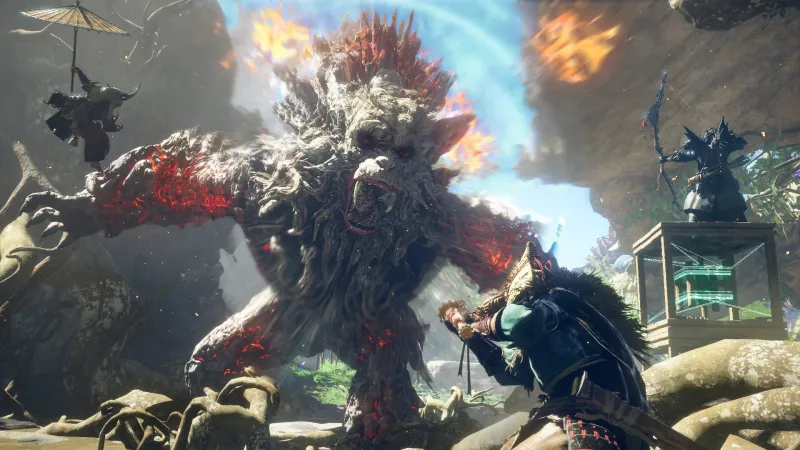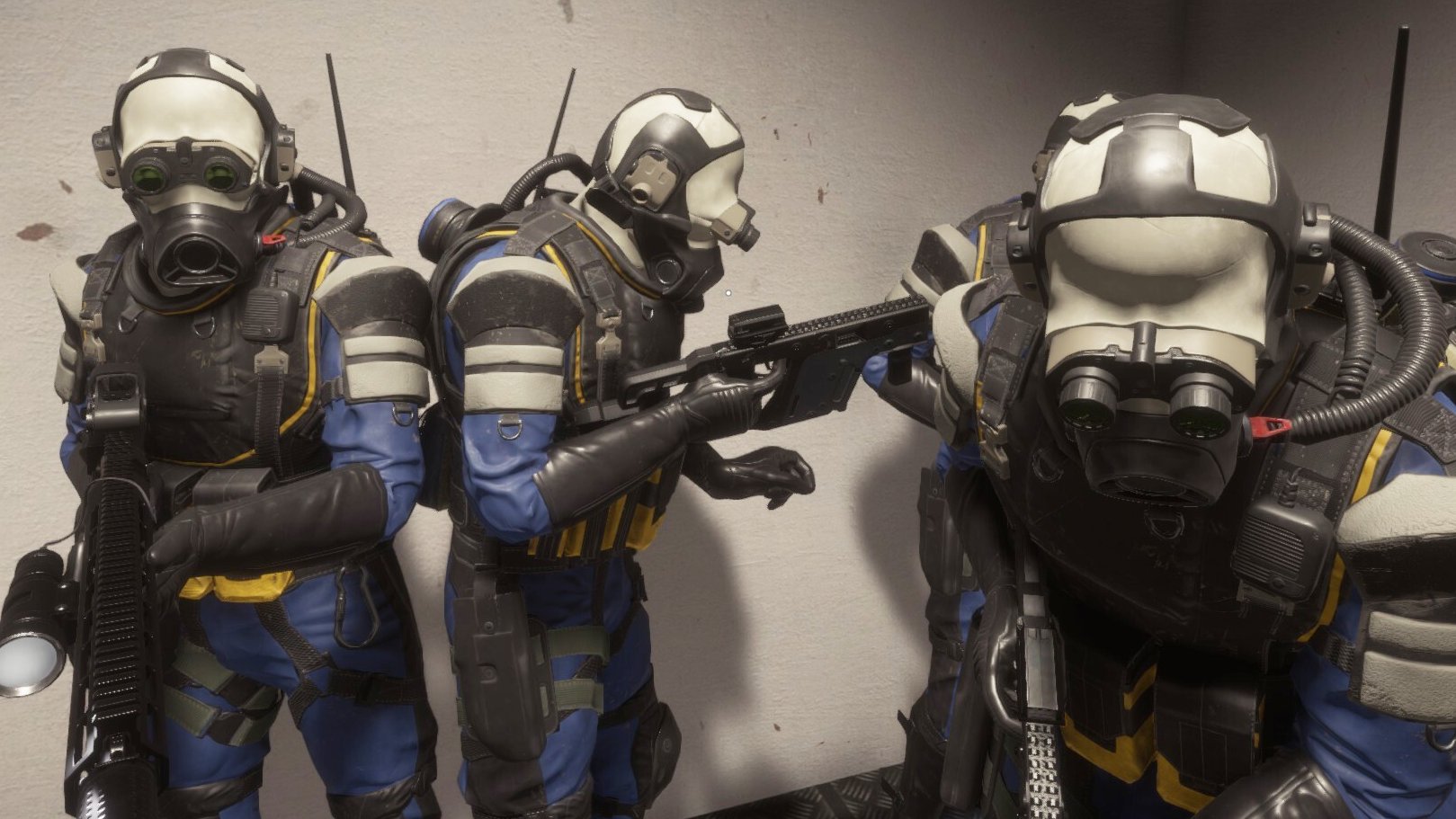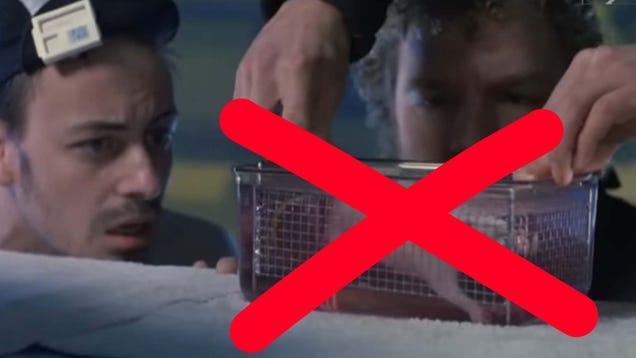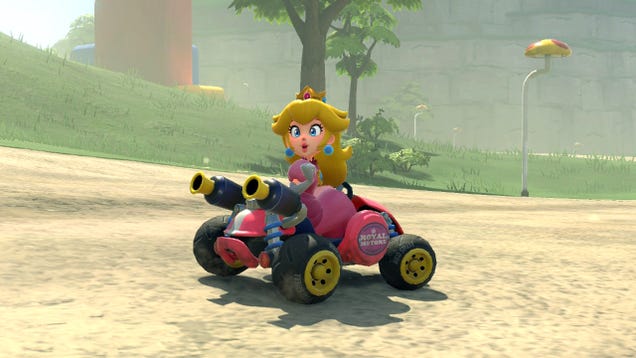
Reviewed on: Xbox Series X/S Platform: PlayStation 5, Xbox Series X/S, PlayStation 4, Xbox One, Stadia, PC Publisher: Activision Developer: Bungie Release: September 6, 2017 (PlayStation 4, PC, Xbox One, Stadia), December 8, 2020 (PlayStation 5, Xbox Series X/S) Rating: Teen Wild Hearts may seem similar to Monster Hunter and other hunting genre games, but its focus on constructing gadgets in a world steeped in Japanese folklore and feudal-era Japan help it carve its own identity. Like Monster Hunter, you track big game, craft new armor and weapons, and do it all over again. But the otherworldly take on old-world Japan, filled with giant mythical beasts, is a profoundly satisfying playground to exist in thanks to excellent weapon play and a key addition: powerful technology you can build on the fly during hunts. Slaying the game’s Kemono, Wild Hearts' name for monsters like poisonous ravens, boars the size of houses, and other beasts inspired by and pulled from Japan’s folklore, quickly hooked me. The variety of weapons, from a katana to the bladed Wagasa (basically an umbrella you can parry with) to the tried and true hammer, all feel unique and enjoyable. But the Karakuri technology takes center stage. Your hunter gains the ability to construct crates, springs, torches, and campsite equipment early on. Soon you can stack three springs on top of each other to create a giant hammer to knock a Spinedlider from its unreachable perch (or whack any Kemono). Construct enough crates when Kingtusk, the massive boar, charges, and you send it flying back. Flying enemies aren’t quite as fear-inducing when you can launch fireworks at them. Karakuri technology adds an enjoyable and frenetic aspect to your offense and defense. Rolling and sliding work in a pinch, but you must learn to move around with a spring to survive. Or how to use that spring to rush forward for a slash that will knock a monster over. The gadgets at your disposal aren’t just fun to use but are crucial aspects of the game. Misplacing a component on uneven ground can mean getting gored by a boar. That’s super frustrating, but it thankfully doesn’t happen too often. However, another aspect is even more irritating and a constant challenge: the camera. Locking onto an enemy works the best, but even then, you might find the camera pointed at your hunter and some scenery as you desperately slash at a Kemono that’s out of view. Wrestling with the camera shouldn’t be this big of an issue in a game that requires such precision. The game shines when you can have a friend or two join missions online. You have more time to construct Karakuri or go in for a katana combo while your prey is distracted. With that said, Wild Hearts is a delightful and manageable solo experience. While playing alone, I ran into a wall early with the boar, but changed to a bow, applied some upgrades, crafted new armor, and overcame it. Any time I ran into a challenging new Kemono, new upgrades or weapons usually did the trick. And for better or worse, I could climb atop temples and trees with a bow to rain arrows down on a monster hitting too hard and stay outside of its range. It’s cheap, but some areas let you win via this long strategy of attrition and guerilla warfare. Utilizing your environment during hunts is essential. Players can find new sites via Dragon Pits to construct permanent Dragon Karakuri, like fast-travel tents, fishing gear, gadgets to find Kemono, food storage, and more. Ziplines, gliders, and fans turn travel into a breeze, and they remain for each subsequent hunt so that you can reuse them. These permanent structures make the ancient bamboo forest feel lived in. An area’s waterfront property becomes a small fishing industry for your hunter to make money. You slowly begin to hold dominion over the hunting grounds, and your progress feels concrete. The environments themselves are wondrous and evocative. Like the aforementioned bamboo forest, the diversity and creativity in each area can be distracting. More than once, I got lost on my way to a Kemono because I just needed to see what was around a corner, up a hill, or in a cave leading into an old temple. Little pieces of lore via scrolls or notes lay scattered around areas, telling brief histories of a wrecked ship or why vines have reclaimed an entire town and temple. These bits of lore were much more engaging than the game’s story. There’s an overarching story in Wild Hearts, but it’s mostly forgettable. You help an archetypal warrior full of tall tales seeking his next sip of sake and others in the town of Minato, but it failed to grip me. Ancient technology, a mysterious figure, beasts devastating the human world – we’ve seen these tropes before. The gameplay matters most in Wild Hearts – it’s fresh, chaotic, and breathless. It does not reinvent the hunting genre, but it does just enough with its addition of the Karakuri gadgets and arresting locales (not to mention the myriad ways to traverse them) to give the genre a fresh and welcome perspective. A stronger story would have been welcome, and the camera leaves much to be desired, but Wild Hearts is a deeply engaging experience even with these faults. Score: 8 About Game Informer's review system Purchase
Reviewed on:
Xbox Series X/S
Platform:
PlayStation 5, Xbox Series X/S, PlayStation 4, Xbox One, Stadia, PC
Publisher:
Activision
Developer:
Bungie
Release:
September 6, 2017
(PlayStation 4,
PC,
Xbox One,
Stadia), December 8, 2020
(PlayStation 5,
Xbox Series X/S)
Rating:
Teen
Wild Hearts may seem similar to Monster Hunter and other hunting genre games, but its focus on constructing gadgets in a world steeped in Japanese folklore and feudal-era Japan help it carve its own identity. Like Monster Hunter, you track big game, craft new armor and weapons, and do it all over again. But the otherworldly take on old-world Japan, filled with giant mythical beasts, is a profoundly satisfying playground to exist in thanks to excellent weapon play and a key addition: powerful technology you can build on the fly during hunts.
Slaying the game’s Kemono, Wild Hearts’ name for monsters like poisonous ravens, boars the size of houses, and other beasts inspired by and pulled from Japan’s folklore, quickly hooked me. The variety of weapons, from a katana to the bladed Wagasa (basically an umbrella you can parry with) to the tried and true hammer, all feel unique and enjoyable.
But the Karakuri technology takes center stage. Your hunter gains the ability to construct crates, springs, torches, and campsite equipment early on. Soon you can stack three springs on top of each other to create a giant hammer to knock a Spinedlider from its unreachable perch (or whack any Kemono). Construct enough crates when Kingtusk, the massive boar, charges, and you send it flying back. Flying enemies aren’t quite as fear-inducing when you can launch fireworks at them.
Karakuri technology adds an enjoyable and frenetic aspect to your offense and defense. Rolling and sliding work in a pinch, but you must learn to move around with a spring to survive. Or how to use that spring to rush forward for a slash that will knock a monster over. The gadgets at your disposal aren’t just fun to use but are crucial aspects of the game. Misplacing a component on uneven ground can mean getting gored by a boar. That’s super frustrating, but it thankfully doesn’t happen too often.
However, another aspect is even more irritating and a constant challenge: the camera. Locking onto an enemy works the best, but even then, you might find the camera pointed at your hunter and some scenery as you desperately slash at a Kemono that’s out of view. Wrestling with the camera shouldn’t be this big of an issue in a game that requires such precision.
The game shines when you can have a friend or two join missions online. You have more time to construct Karakuri or go in for a katana combo while your prey is distracted. With that said, Wild Hearts is a delightful and manageable solo experience. While playing alone, I ran into a wall early with the boar, but changed to a bow, applied some upgrades, crafted new armor, and overcame it. Any time I ran into a challenging new Kemono, new upgrades or weapons usually did the trick. And for better or worse, I could climb atop temples and trees with a bow to rain arrows down on a monster hitting too hard and stay outside of its range. It’s cheap, but some areas let you win via this long strategy of attrition and guerilla warfare.
Utilizing your environment during hunts is essential. Players can find new sites via Dragon Pits to construct permanent Dragon Karakuri, like fast-travel tents, fishing gear, gadgets to find Kemono, food storage, and more. Ziplines, gliders, and fans turn travel into a breeze, and they remain for each subsequent hunt so that you can reuse them. These permanent structures make the ancient bamboo forest feel lived in. An area’s waterfront property becomes a small fishing industry for your hunter to make money. You slowly begin to hold dominion over the hunting grounds, and your progress feels concrete.
The environments themselves are wondrous and evocative. Like the aforementioned bamboo forest, the diversity and creativity in each area can be distracting. More than once, I got lost on my way to a Kemono because I just needed to see what was around a corner, up a hill, or in a cave leading into an old temple. Little pieces of lore via scrolls or notes lay scattered around areas, telling brief histories of a wrecked ship or why vines have reclaimed an entire town and temple. These bits of lore were much more engaging than the game’s story.
There’s an overarching story in Wild Hearts, but it’s mostly forgettable. You help an archetypal warrior full of tall tales seeking his next sip of sake and others in the town of Minato, but it failed to grip me. Ancient technology, a mysterious figure, beasts devastating the human world – we’ve seen these tropes before.
The gameplay matters most in Wild Hearts – it’s fresh, chaotic, and breathless. It does not reinvent the hunting genre, but it does just enough with its addition of the Karakuri gadgets and arresting locales (not to mention the myriad ways to traverse them) to give the genre a fresh and welcome perspective. A stronger story would have been welcome, and the camera leaves much to be desired, but Wild Hearts is a deeply engaging experience even with these faults.
Score:
8
About Game Informer’s review system



